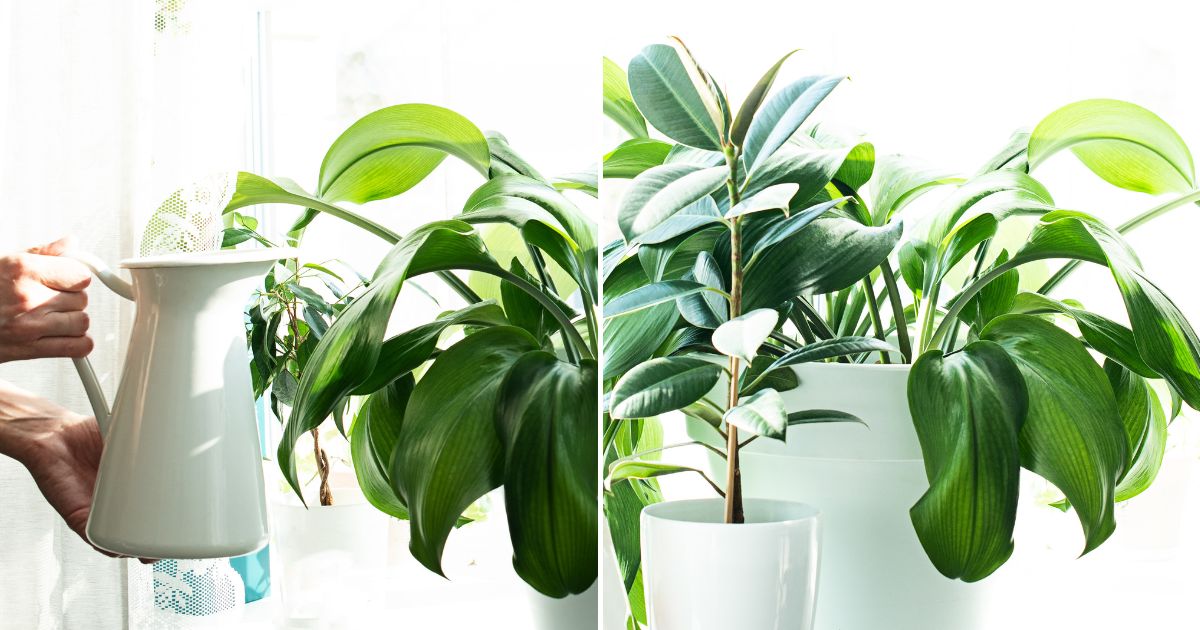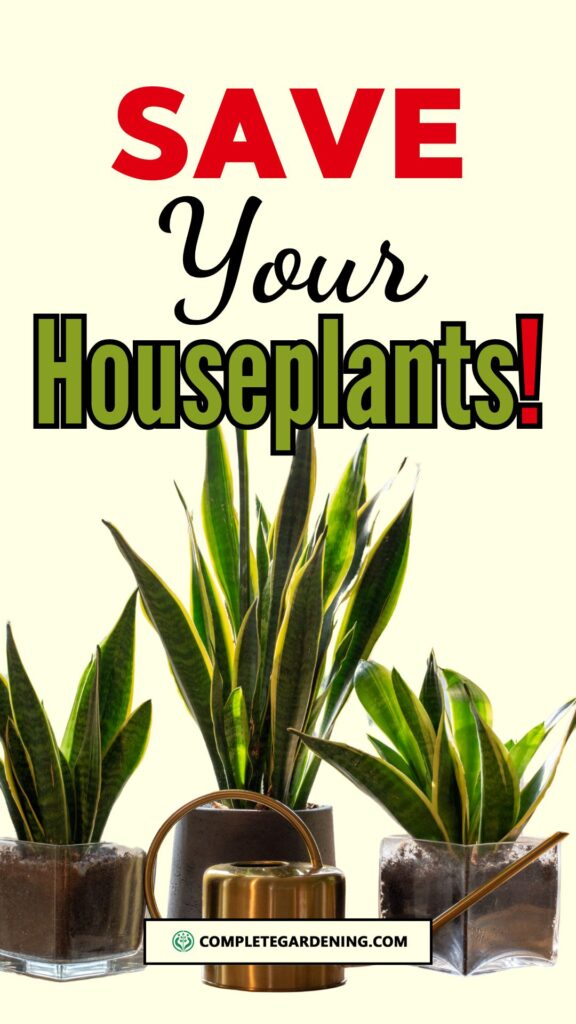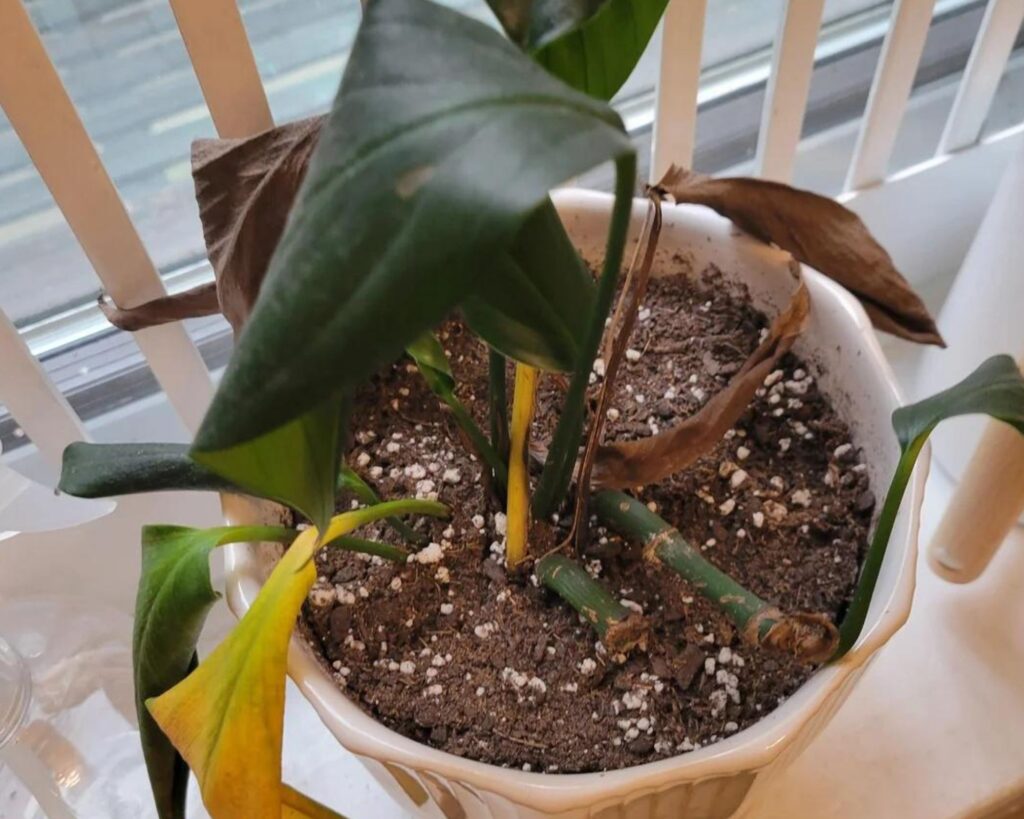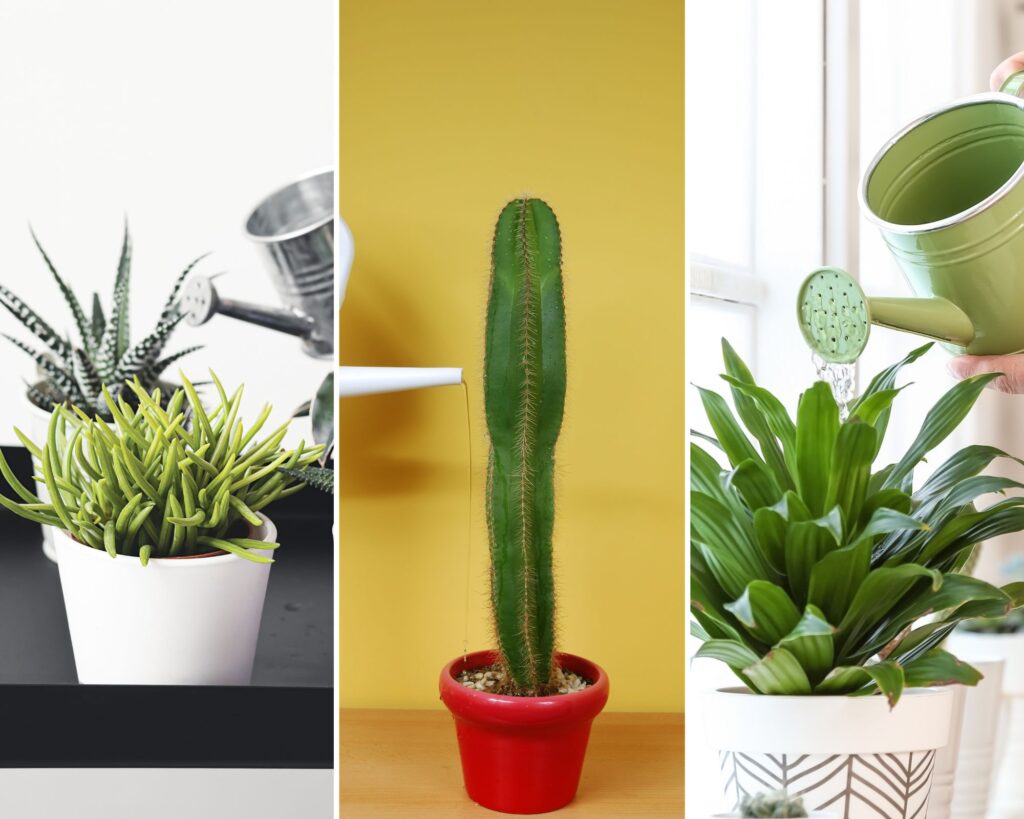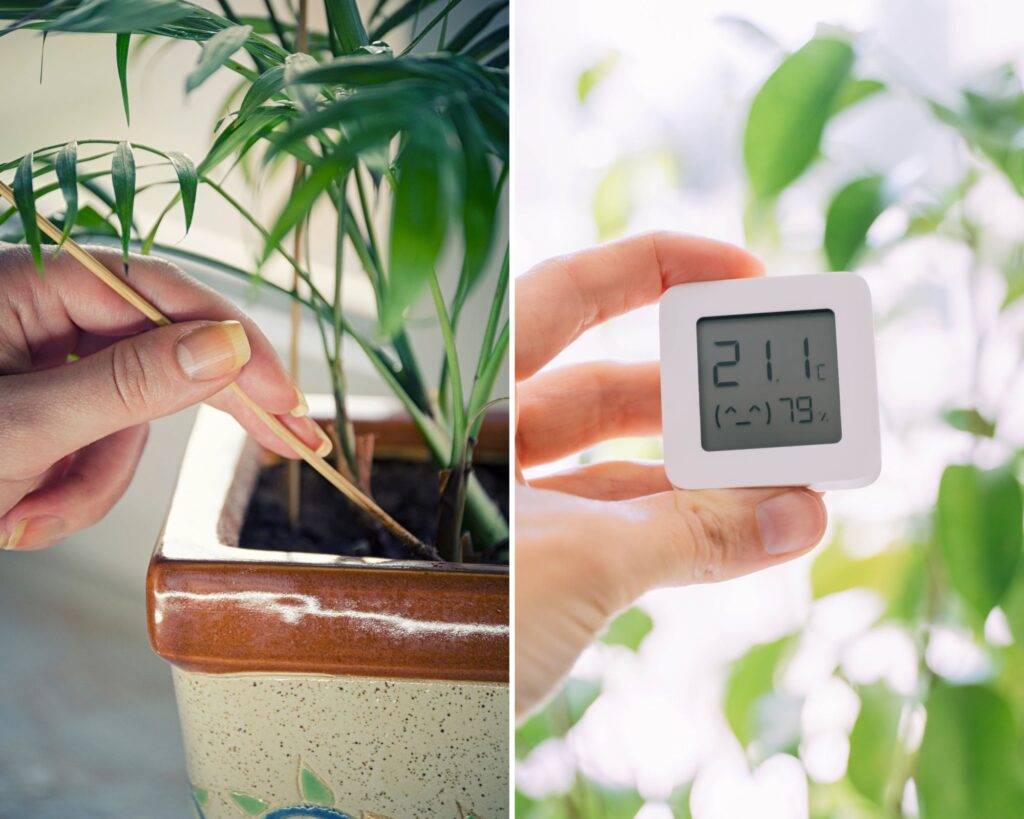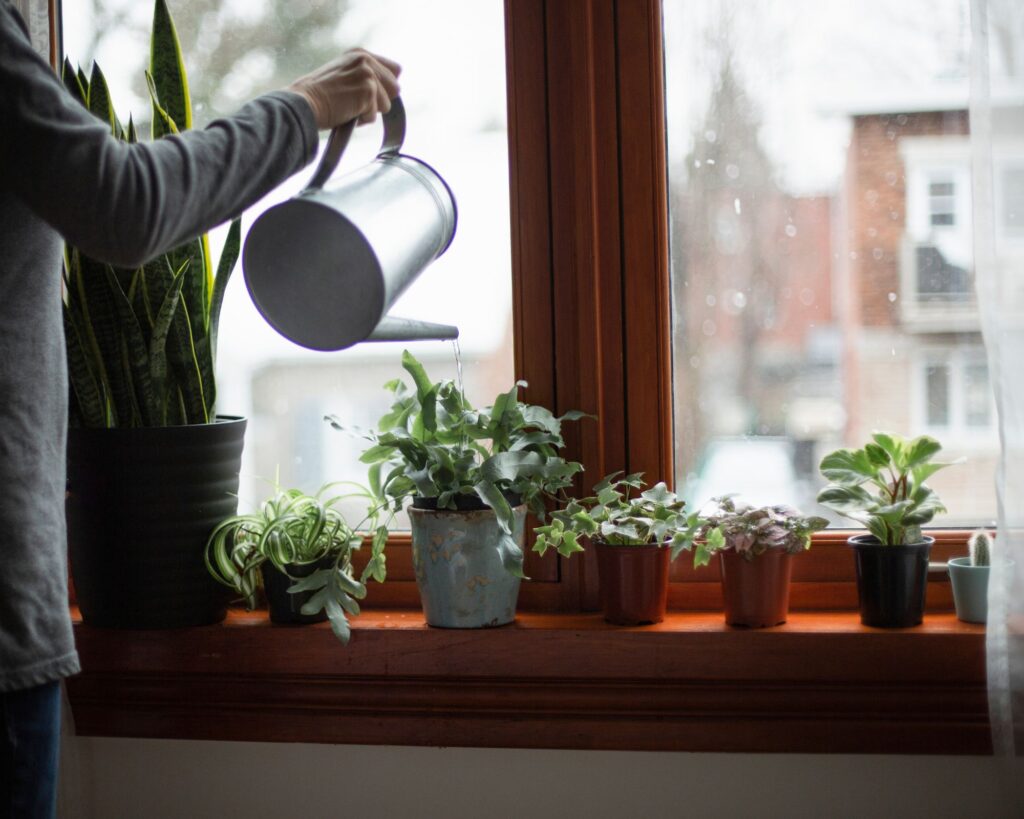Houseplants can transform any space, but keeping them alive isn’t always straightforward. Are you giving them too much water? Or not enough? This delicate balance can be tricky, but it’s key to your plant’s vitality.
Dive into this guide and discover how to read your plant’s signals, from yellowing leaves to soil dryness. With these insights, you’ll turn into a plant whisperer, ensuring your green companions flourish.
Understanding Plant Water Requirements
Knowing how much water your plants need is crucial for their health. Different plants have unique needs influenced by their species and environmental factors.
Identifying Plant Species
Each plant species has its own water requirements. For example, succulents need less water compared to tropical plants. Recognize your plant type and research its specific needs.
Grouping your plants by water needs is handy. Succulents and cacti thrive on infrequent watering. Ferns and tropical plants usually need more consistent moisture. Use the plant’s natural habitat as a guide.
Factors Affecting Water Needs
Several factors can alter how much water your plant requires. Temperature, humidity, and light all play a role. High temperatures and low humidity often increase water needs. Conversely, cooler temps and high humidity lower them.
Soil type is also important. Well-draining soil reduces the risk of overwatering. Poor-draining soil retains water longer, increasing the risk of root rot. Adjust your watering schedule based on these conditions to keep your plants healthy.
Signs of Overwatering
Overwatering your houseplants can lead to several visible issues, particularly affecting the leaves, soil, and roots.
Symptoms in Leaves and Soil
Leaves often appear yellowing or wilting when a plant is overwatered. They may feel soft and mushy rather than firm. This is a clear sign that your plant is absorbing too much water.
Soil that is consistently wet or soggy is another indicator. You might also notice algae or mold growth on the soil surface. Foul odors can emanate from the soil, signaling poor drainage and excessive moisture retention.
Root Rot and Its Consequences
Root rot is a serious consequence of overwatering. Roots become brown or black and feel slimy, losing their ability to absorb nutrients and water effectively.
This damage can make the plant more susceptible to diseases. Root rot severely weakens the plant, often leading to its eventual death if not addressed promptly.
Preventing overwatering can save your plant from unnecessary stress and improve its overall health. Checking the moisture level in the soil before each watering can make a significant difference.
Indications of Underwatering
Identifying signs of underwatering in houseplants is crucial for maintaining their health. Look out for visual changes in the plant’s appearance and check soil moisture levels.
Visual Clues in Plants
Underwatered plants often exhibit wilted or drooping leaves. The foliage may look dry, brittle, or even curled. In some cases, leaves can develop brown edges or tips due to lack of moisture. Additionally, underwatering can cause leaves to yellow and fall off, starting from the bottom of the plant.
Stunted growth is another sign. The plant may not produce new leaves or flowers and overall growth appears slower. A dusty or faded leaf surface can also indicate insufficient water uptake.
Soil Dryness and Plant Stress
To determine if a plant is underwatered, check the soil. Dry, compacted soil is a common indicator. Stick your finger an inch or two into the soil; if it feels dry, your plant likely needs water.
Soil pulling away from the pot’s edges is another red flag. Plants in dry soil may develop weak or thin stems, making them prone to breaking. Additionally, you might notice pest infestations as stressed plants attract pests like spider mites.
Correct Watering Techniques
It’s essential to know when and how much to water your houseplants to avoid overwatering or underwatering. By following a proper schedule and using effective watering methods, you can keep your plants healthy and thriving.
Watering Schedules and Quantities
Consistency is key when watering houseplants. Different plants have varying needs, so adjust your schedule based on the specific requirements of each plant. For instance, succulents may need watering every 2-3 weeks, whereas tropical plants might need water every week. Use the following general guidelines:
- Succulents: Water every 2-3 weeks.
- Tropical plants: Water every week.
- Cacti: Water every 3-4 weeks.
Check the soil moisture by sticking your finger about an inch into the soil. If it’s dry, it’s time to water. Avoid letting the soil become completely dry or too soggy, as these conditions can harm plant roots.
Methods to Deliver Water Effectively
Using the right watering methods can significantly impact plant health. Top watering, where you pour water at the base of the plant, is common and effective. Ensure you water slowly, letting the water soak in thoroughly before adding more.
For plants prone to rot, consider bottom watering. Place the pot in a tray of water and allow the soil to absorb moisture through the drainage holes. This method prevents over-saturating the top layers of soil and helps encourage root growth.
Self-watering pots can also be a good choice for busy individuals. These pots provide a consistent moisture level, reducing the risk of over or underwatering.
Reviving Overwatered and Underwatered Plants
Reviving your plants depends on correctly identifying whether they suffer from too much or too little water. Follow specific steps to address each issue and apply long-term care strategies to prevent recurrence.
Steps for Recovery
For Overwatered Plants:
- Remove from Pot: Gently take the plant out of its pot to inspect the roots.
- Trim Damaged Roots: Use sterile scissors to cut away any brown, mushy roots.
- Improve Drainage: Repot the plant using fresh soil in a container with drainage holes. Adding perlite or sand can improve soil drainage.
- Water Sparingly: Allow the top inch of soil to dry before watering again.
For Underwatered Plants:
- Soak the Soil: Place the plant in a basin of water and let it sit for 30 minutes to absorb water from the bottom.
- Loosen Soil: Gently break up any compacted soil to allow better water penetration.
- Increase Humidity: Place a humidity tray or mist the plant regularly.
- Monitor Watering: Ensure the soil remains consistently moist, not wet. Aim for a balance to prevent future underwatering.
Long-Term Plant Care Strategies
- Proper Watering Schedule: Create a routine based on your plant’s specific needs. Different plants have different requirements, so it’s important to research and adhere to these.
- Soil Choice: Use well-draining soil for most houseplants. Adjust soil components like peat, bark, and perlite based on the plant type.
- Container Choice: Ensure pots have adequate drainage holes. Consider using terracotta pots to help manage moisture levels.
- Climate Control: Adjust indoor humidity and temperature to suit your plants. Use humidifiers, heaters, or air conditioning as needed to maintain a stable environment.
- Regular Checks: Inspect your plants regularly for signs of water stress. Check the soil moisture with your finger or use a moisture meter to ensure they’re getting the right amount of water.
Mastering the art of watering your houseplants can make all the difference in their health and vibrancy. By recognizing the signs of both overwatering and underwatering, you can adjust your care routine to meet their needs precisely. Remember, a bit of attention and the right techniques go a long way in keeping your plants thriving.
Now that you’re equipped with the knowledge to identify and address common watering mistakes, you’ll be able to create a healthier environment for your houseplants to flourish. Whether you’re rescuing a droopy fern or preventing root rot in your succulents, these tips will help you nurture a beautiful, thriving indoor garden.
